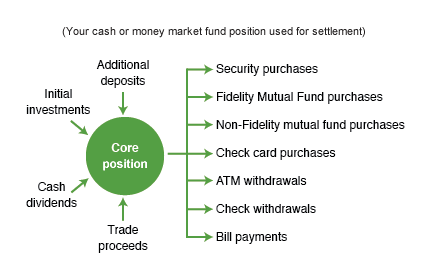How is my account protected?
Protecting your account assets
Fidelity's brokerage businesses (Fidelity Brokerage Services LLC and National Financial Services LLC [NFS]) are members of the (SIPC), and brokerage accounts maintained with Fidelity are covered by SIPC, which protects brokerage accounts of each customer when a brokerage firm is closed due to bankruptcy or other financial difficulties and customer assets are missing from accounts.
SIPC protects brokerage accounts of each customer up to $500,000 in securities, including a limit of $250,000 on claims for cash awaiting reinvestment. Money market funds held in a brokerage account are considered securities.
In addition to SIPC protection, Fidelity, through NFS, provides its brokerage customers with additional excess of SIPC coverage from Lloyd's of London together with Axis Specialty Europe Ltd. and Munich Reinsurance Co. The excess of SIPC coverage would only be used when SIPC coverage is exhausted. As with SIPC, excess of SIPC protection does not cover investment losses in customer accounts due to market fluctuation. It also does not cover other claims for losses incurred while broker-dealers remain in business. Total aggregate excess of SIPC coverage available through Fidelity's excess of SIPC policy is $1 billion.
Within Fidelity's excess of SIPC coverage, there is no per-account dollar limit on coverage of securities, but there is a per-account limit of $1.9 million on coverage of cash awaiting investment. This is the maximum excess of SIPC protection currently available in the brokerage industry.
Both SIPC and excess of SIPC coverage is limited to securities held in brokerage positions, including mutual funds if held in your brokerage account, and securities held in book-entry form. Neither SIPC nor the additional coverage protects against loss of market value of the securities.
Note: Certain assets are not eligible for SIPC protection. Among the assets typically not eligible for SIPC protection are commodity futures contracts and precious metals, as well as investment contracts (such as limited partnerships) and fixed annuity contracts that are not registered with the U.S. Securities and Exchange Commission under the Securities Act of 1933.
In accordance with the SEC rule 15c3-3, often known as the "Customer Protection Rule," Fidelity protects client securities that are fully paid for by segregating them and ensuring that they are not used for any other purpose, such as for loans to investors or institutions, corporate investment purposes, and spending. This practice helps ensure that customers have access to these securities at all times. Customer assets may still be subject to market risk and volatility.
Protecting your personal information
When you use the Fidelity web site, we want to make sure you have the peace of mind that comes with knowing that your information is safe and secure. That's why we only allow access to your account using confirmed information, such as your Social Security number or a username and password that you've created. We generally recommend using a username and password instead of your Social Security number as that combination can offer increased protection. However, no matter which mode of access you choose, we protect your information using the strongest encryption available to us. We also offer the same encryption when you access your accounts using your mobile device. Review our security measures to learn more about how Fidelity protects your information.
Furthermore, we also offer protection for your assets in the case of unauthorized activity in your account. For more information, please see our Customer Protection Guarantee.
Top



